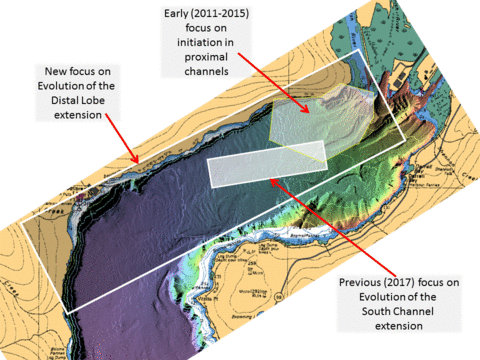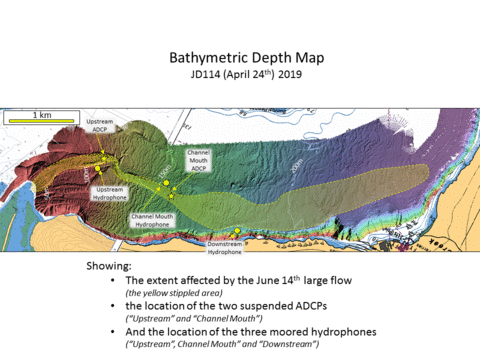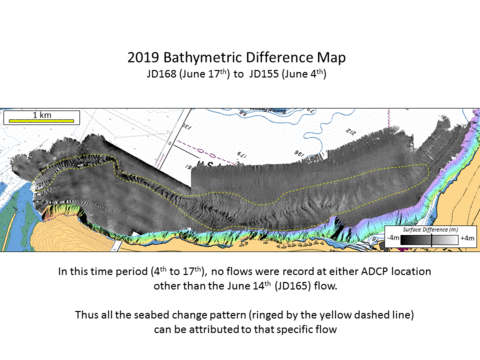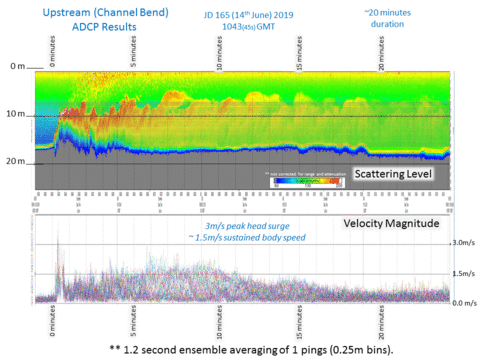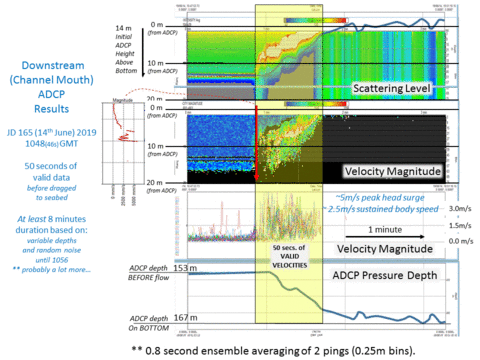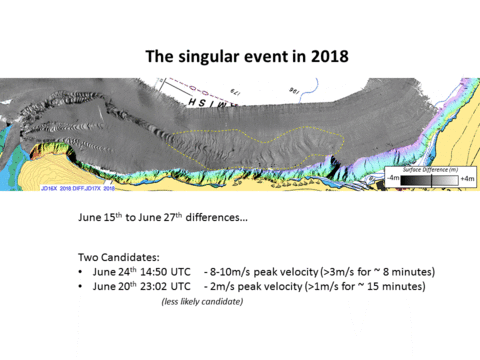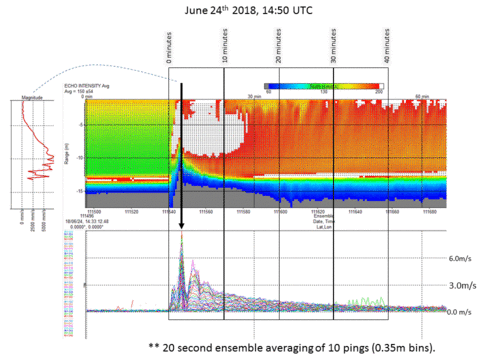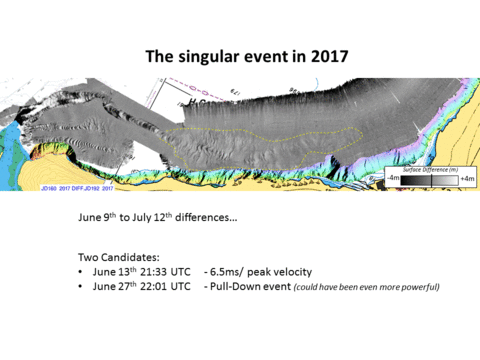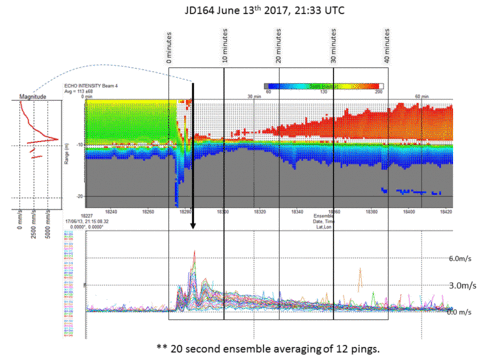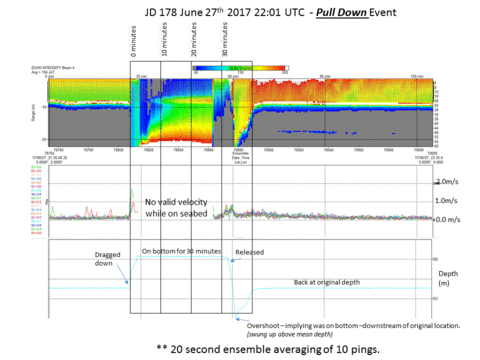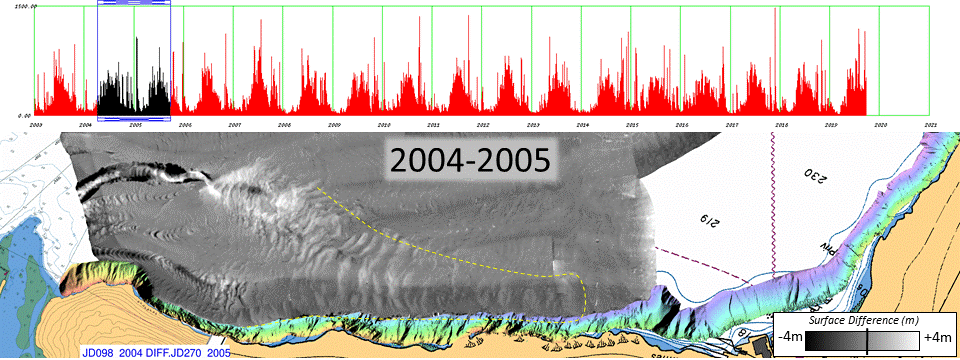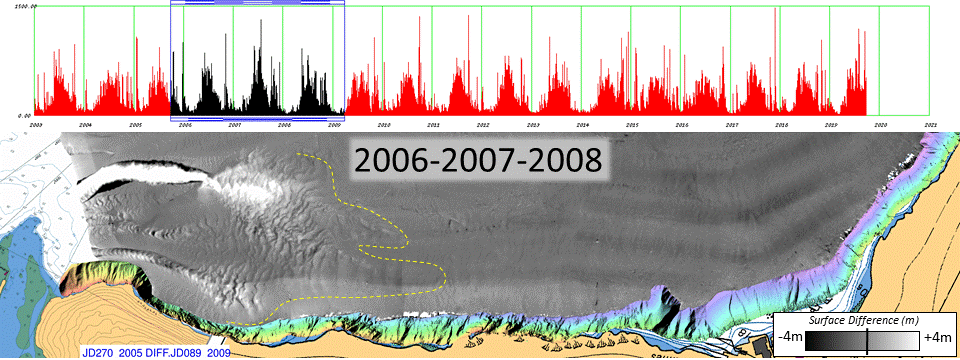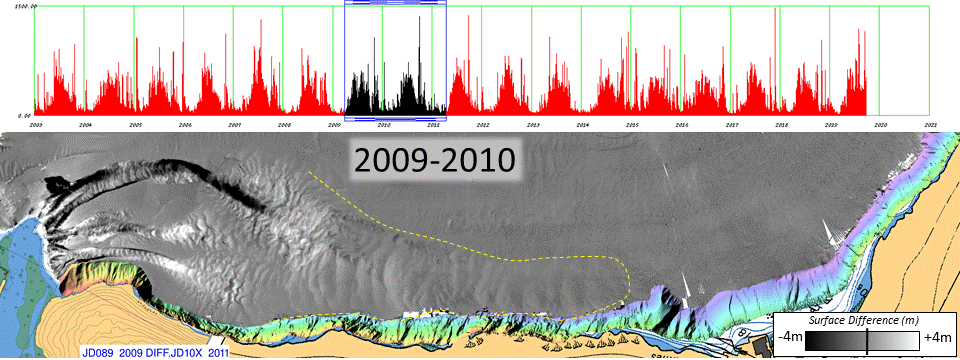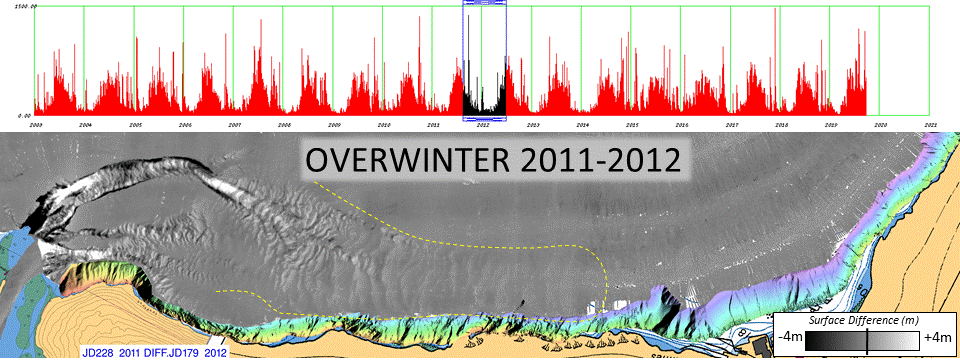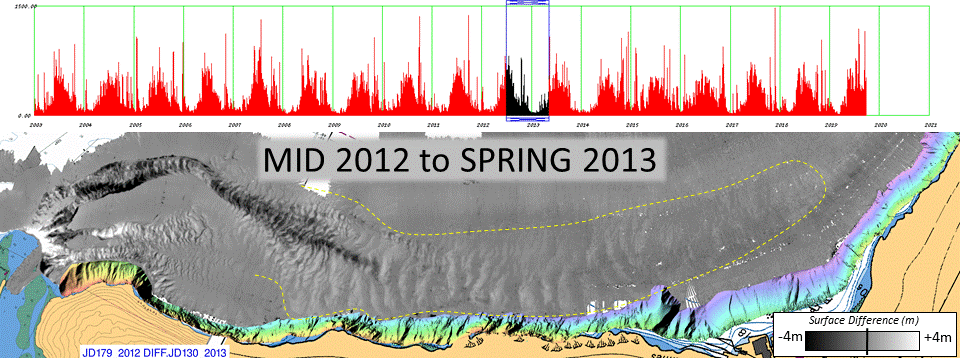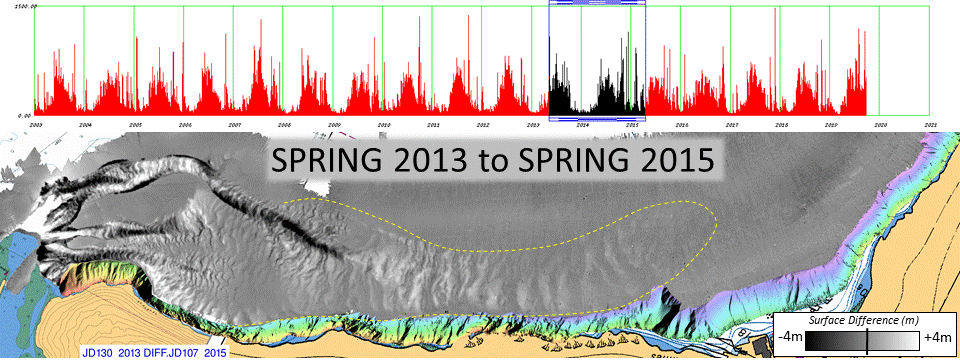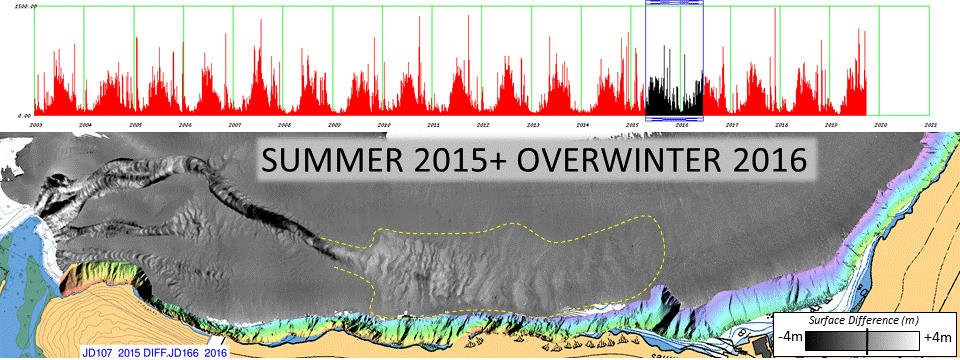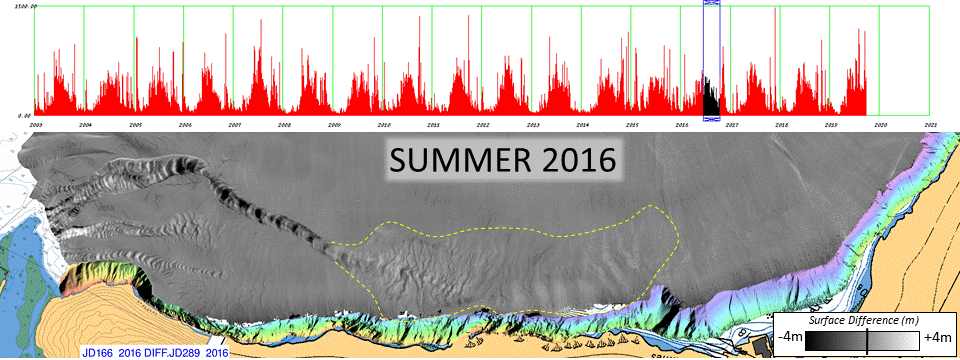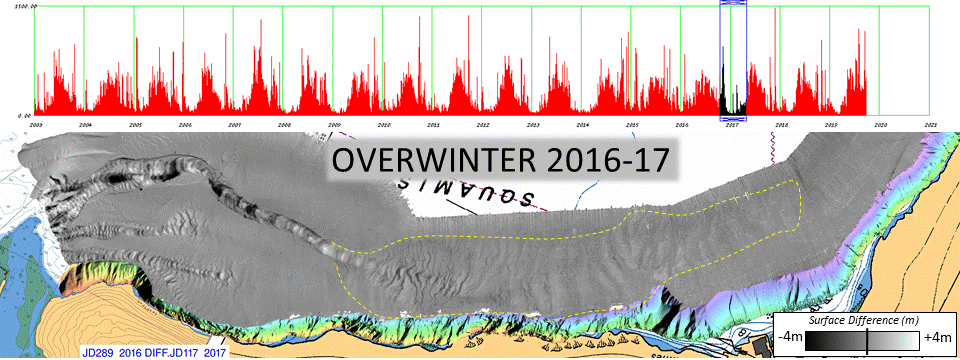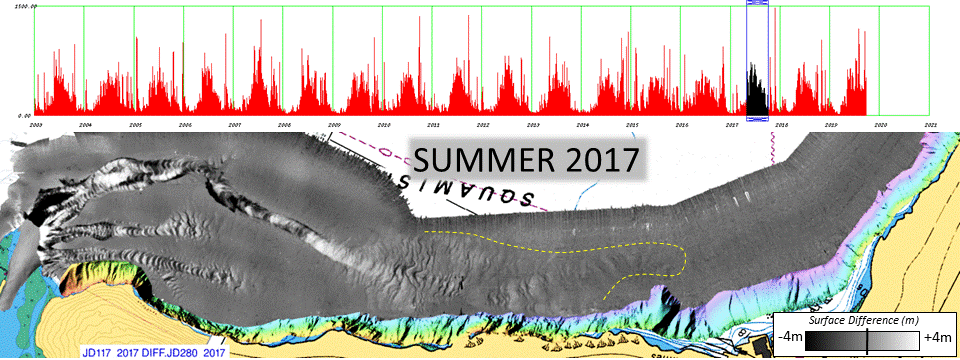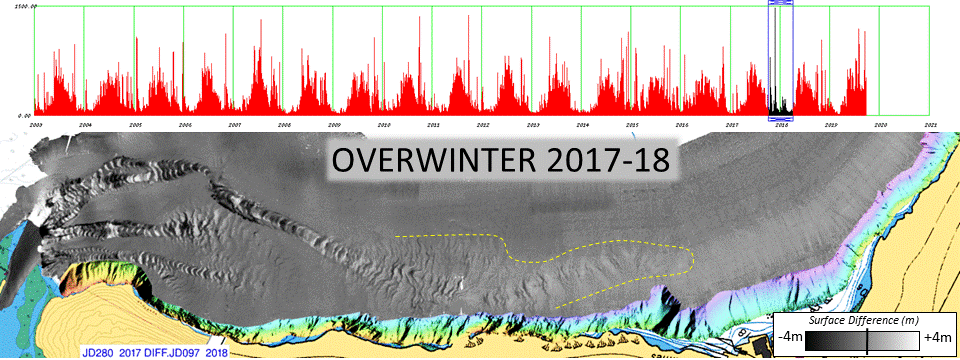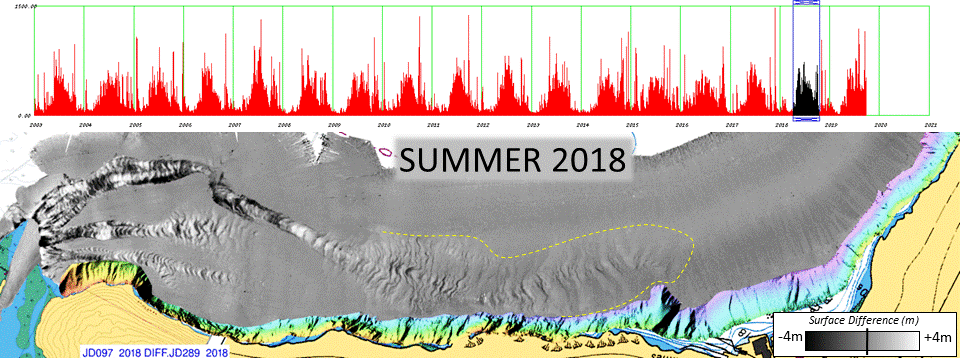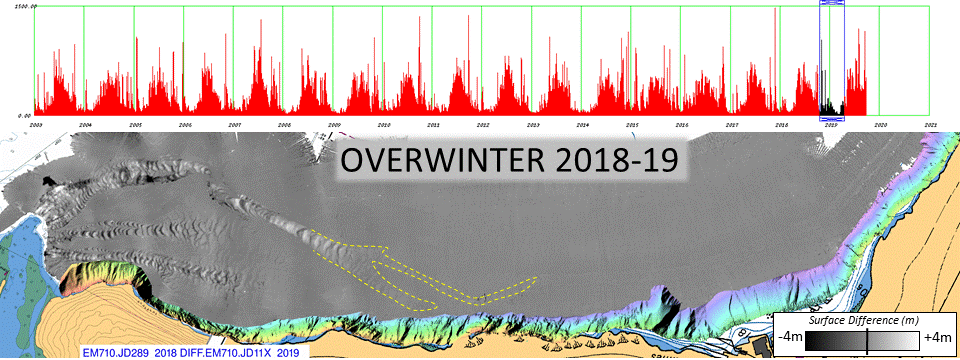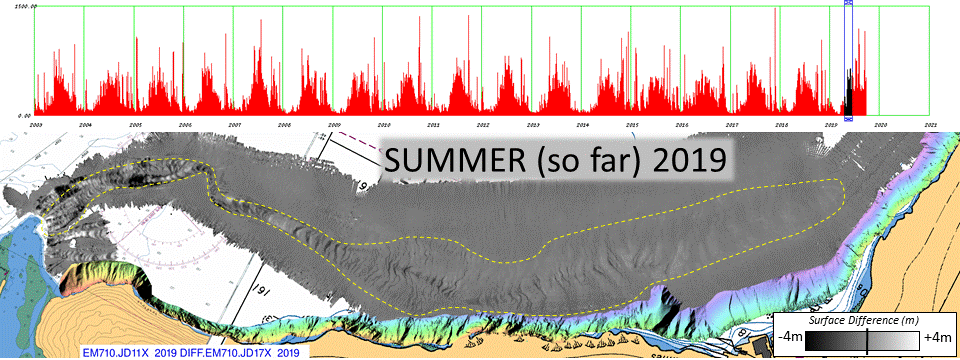For almost all of the figures below, a common rotated map sheet has been used, aligned along the main axis of the Squamish channel-lobe system. That map sheet is illustrated in the figure to the right. It extends 7.4 km from the delta lip to the distal limit beyond which we currently can't recognize seabed change. For all figures below, the map sheet has been rotated anticlockwise by 123.2 degrees so that the flow enters from the left.
Notice that this is a significantly larger area than previously examined. During the early years (2011-2015), almost all the focus was on the proximal channels (see polygon in figure to right). And the last time the data were presented to Exxon (in 2017), the focus was on the growth of the South Channel (inset box in figure to right).
